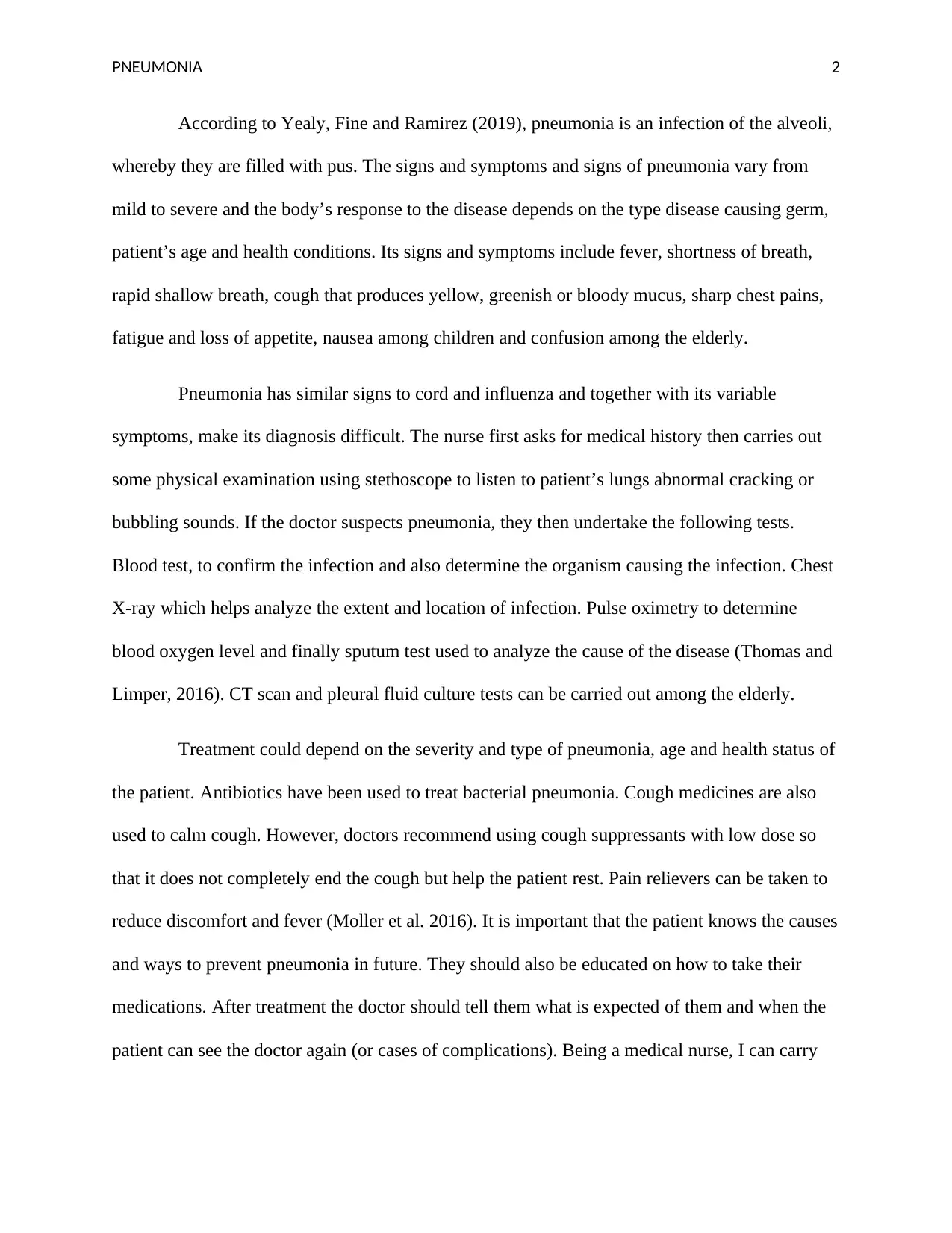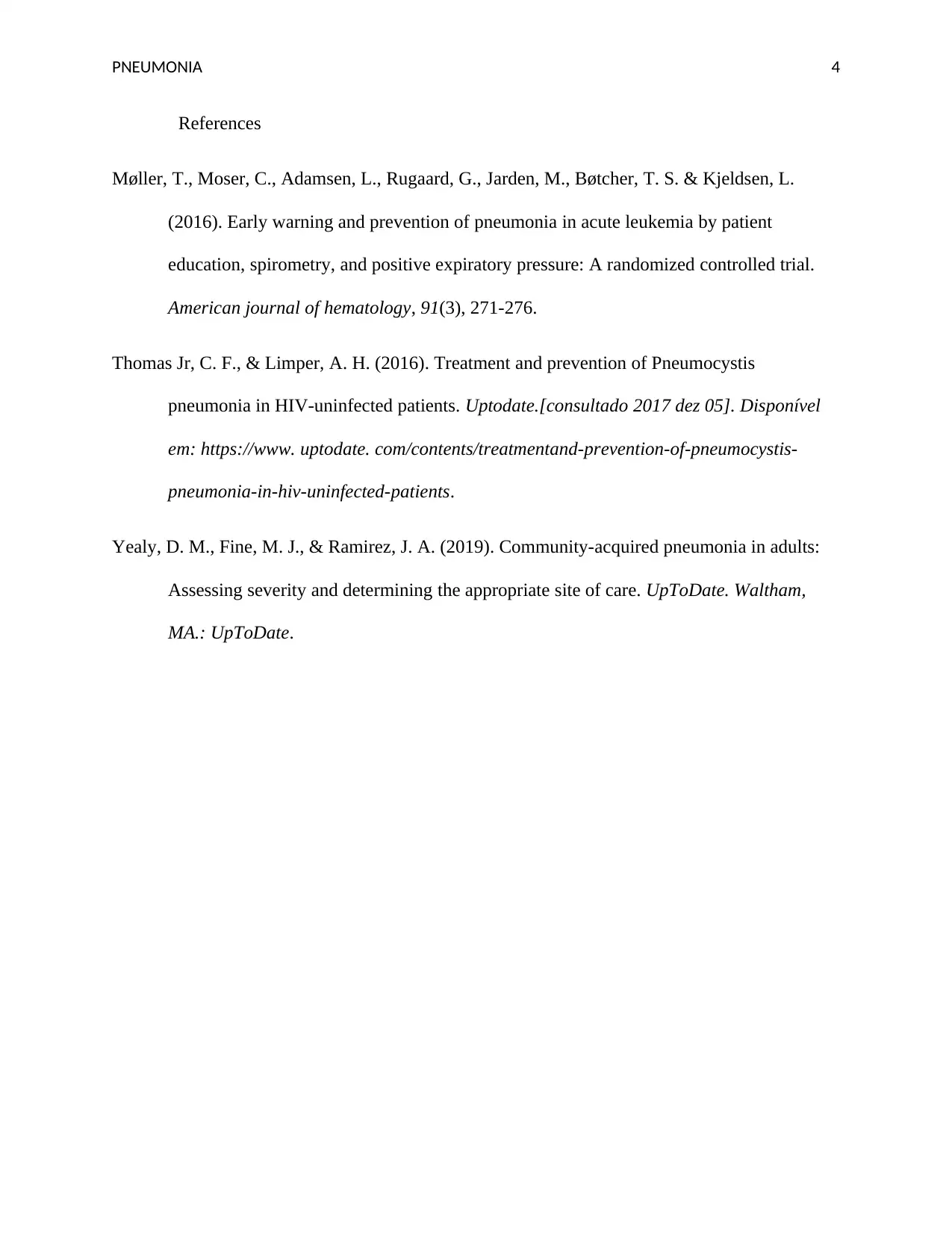Pneumonia Report: Overview of Diagnosis, Treatment, and Prevention
VerifiedAdded on 2022/10/01
|4
|579
|21
Report
AI Summary
This report provides an overview of pneumonia, a disease characterized by infection of the alveoli. The report details the varying signs and symptoms, which can range from mild to severe, depending on the causative agent, patient age, and health conditions. The diagnosis process is described, starting with medical history and physical examination, followed by tests such as blood tests, chest X-rays, pulse oximetry, and sputum tests. The report also outlines the treatment options, including antibiotics, cough medicines, and pain relievers. The importance of patient education on causes, prevention, and medication adherence is emphasized. As a medical nurse, the author can carry out the diagnostic and drug prescription and therefore no need to refer the patient to another health care professional.
1 out of 4











![[object Object]](/_next/static/media/star-bottom.7253800d.svg)